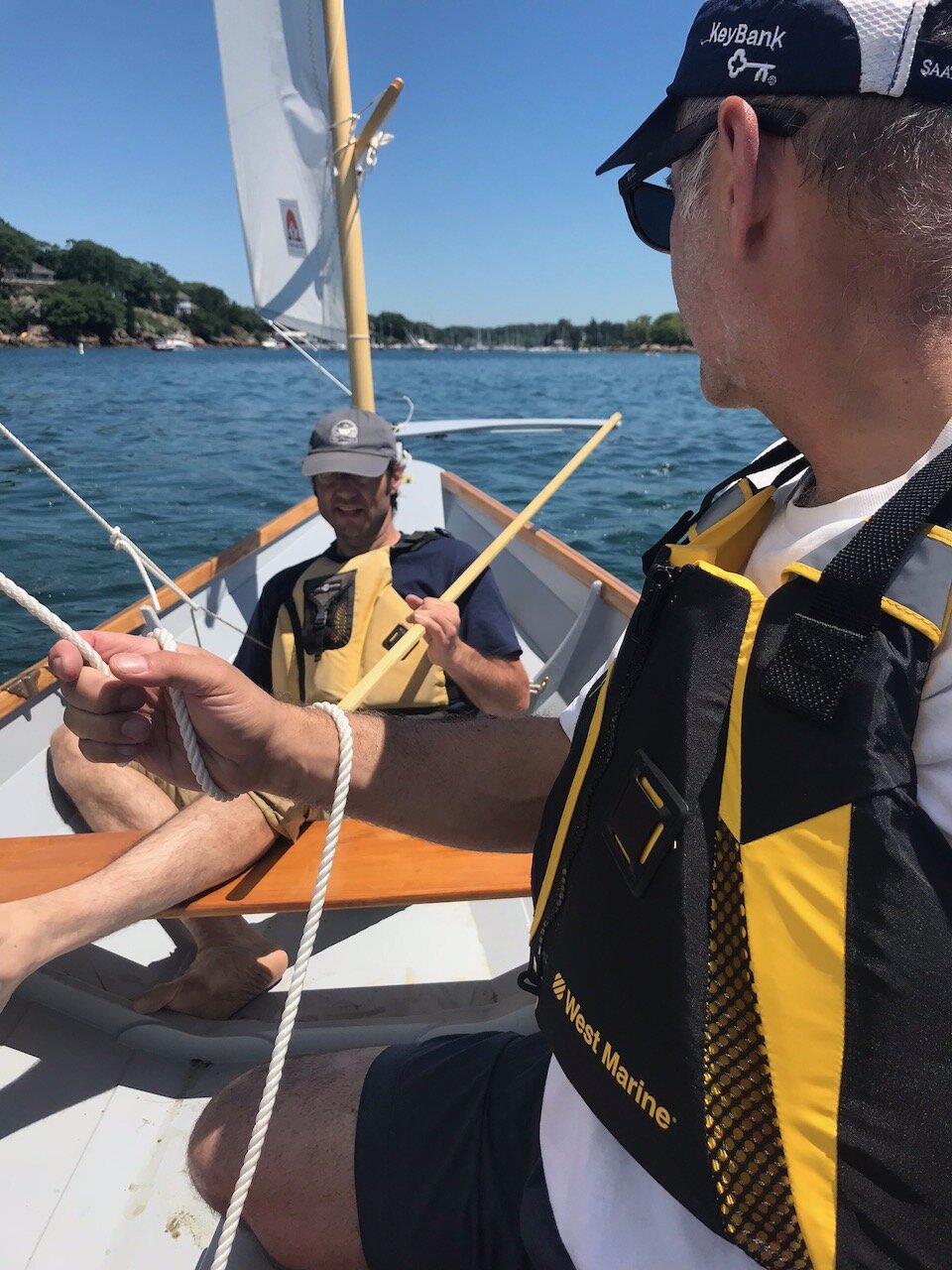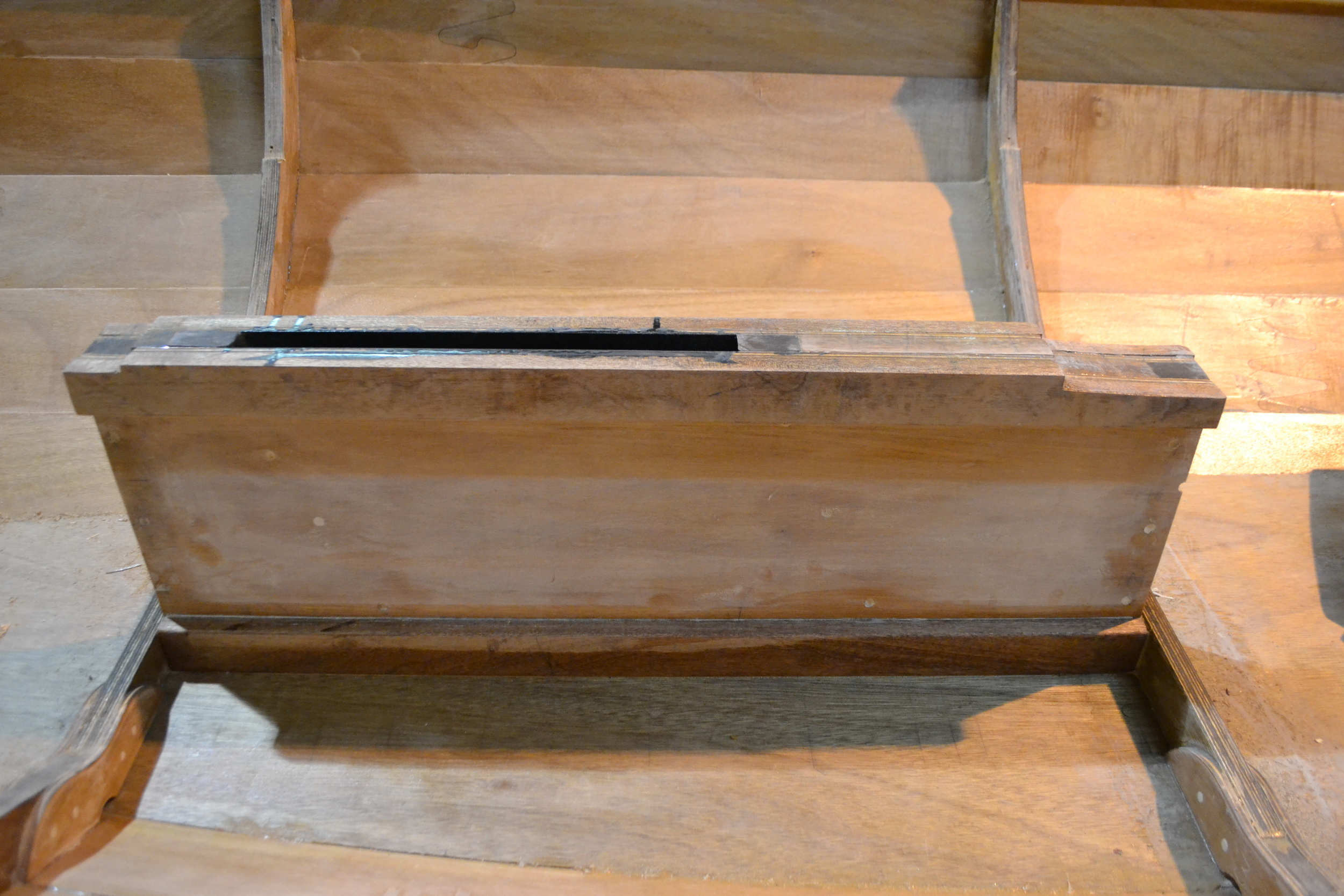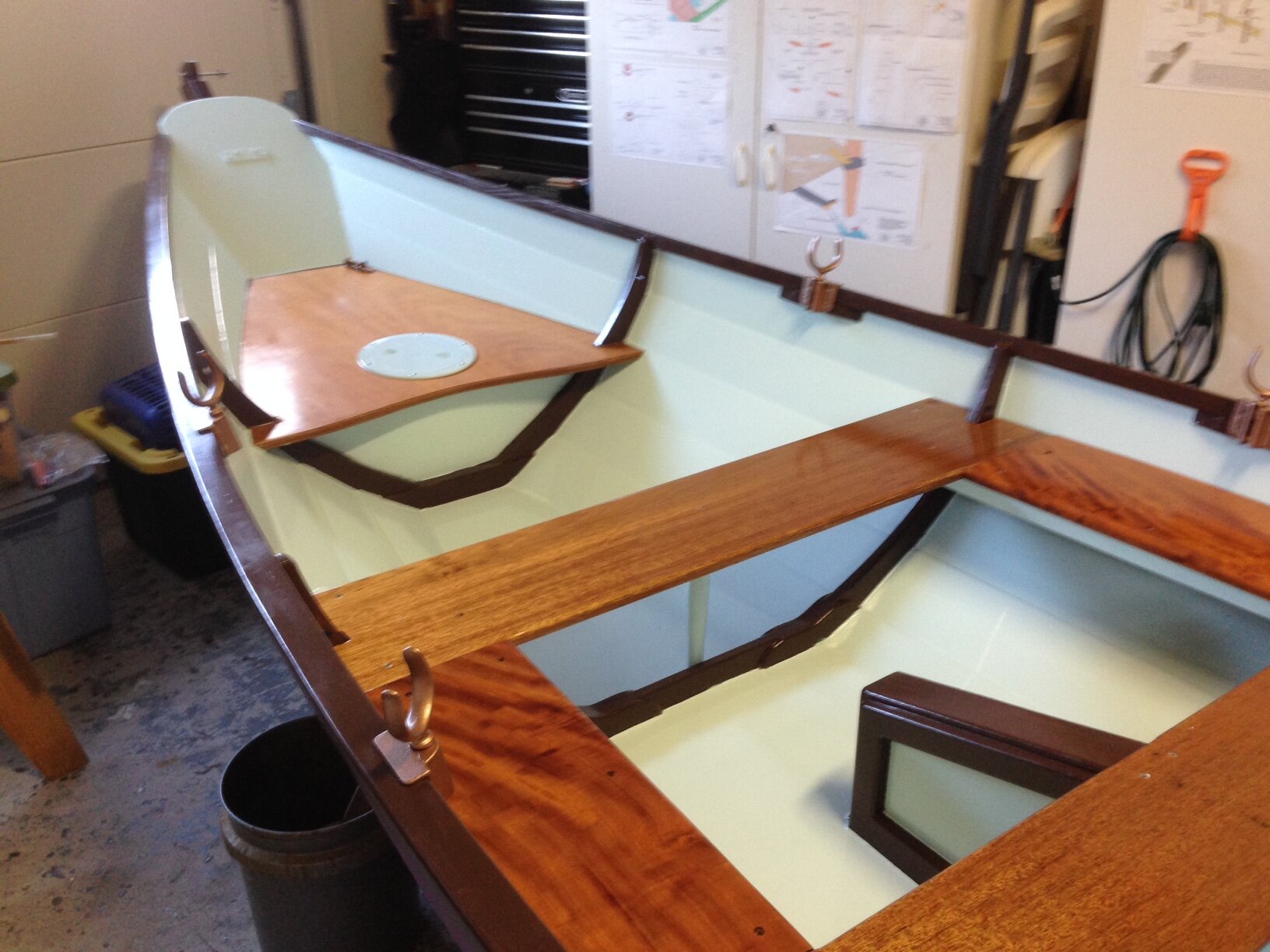Deblois Street Dory
Row | Sail | Camp |cruise | versatile
A DIY dory kit like no other
SPECIFICATIONS
LOA 18' 8" | LWL 14' 7"
Beam 4' 10" | Waterline width 41.5” at 5” w.l.
Draft (board up/down) 5"/27"
Depth amidships 18.4"
Weight 250lbs | Displacement 740 lbs at 5” w.l.
Sail Area from 76sf (sprit) 89sf (lug)
I have spent so many hours pouring over Sam Manning's drawings in the Dory Book by J. Gardner. Initially, I had no plans to design a dory, but I found the dory form so elemental, practical, and beautiful. And I loved the versatility and seaworthiness they offered on the water, especially the Swampscotts. The dory represents the ultimate marriage of form and function. After my first design/build project -- the Drake 17 -- I had to have more. I could no longer suppress the urge to draw my own dory. The presentation drawing you see was the result of the first version of the DSD. I very much aimed to design a true dory. A true dory is built by erecting the stem, frames, and transom on a precut bottom and flipping the whole assembly over onto a strongback cut with the intended rocker of the boat. With all the components shored and braced, planks can be bent. A true dory is cut with dory laps -- a bevel on the underlying and overlying planks. Hull #1 was built from these first hand-drawn plans by Shane Hall and he did a stellar job, especially given that the plans were drawn to quarter scale; he did not have to loft the boat. Version two of the dory was the first kit version of the boat. There were no changes to the design. After a few years of building from kits, a lot had been learned and I applied these lessons to the DSD Mk2. This second generation DSD hull was re-faired to better support the sailing capabilities of the boat and to make it even easier to build than previous versions by eliminating the sometimes confusing dory lap and introducing a precut strongback. However...
This is still the one and only TRUE DORY kit available on the market, anywhere. The others are messy stitch & glue construction or go together unlike a real dory.
The DSD is what I consider the ideal sail & oar boat. This is a craft that will bring utter joy under oars or sail. Too often you hear sail & oar boaters lament how much they wish they did not have to take their oars out to row. Or the other way, I hear them wish that their boat was not so tippy under sail. The D-Street is a joy to sail and row. I fondly recall my first row in hull #1. I was worried that I had drawn too much boat to enjoy rowing solo. Boy was I wrong. With my 9-foot, spoon-blade oars we just flew along and it tracked great. These are the reports I receive from all the other DSD builders since hull #1. The performance of the DSD can be summed up by a memory from one of my Shop Talk & Messabouts. Three dories were out sailing off East End, Portland: a DSD, a Swampscott dory out of Gardner's Dory Book, and another dory from another kit maker. I had 5 people on board as we passed by one of them: "Why is your dory so fast!" one of them exclaimed. While speed is definitely not the point of a dory, it was still quite a compliment and a testament to the abilities of the D-Street Dory under sail and oar.
“Every time that I launch my Deblois St Dory at least one person at the boat ramp comes up to admire and inquire about the boat. While others at the dock are shuttling back and forth in their dinghies or stressfully launching mammoth fiberglass powerboats I can untie, launch, load the dory and be underway in five or ten minutes. This ease of launch makes the boat very accessible for the times when I just want to go out for a short row after work or for a relaxing sail to watch the sunset.”
Complete Kit contents for the Deblois Street Dory
plywood kit | timber kit | hardware kit | epoxy kit
Okoume is generally used for the planking and other 9mm components.
The chipboard components make up the strongback and building jig for the Dory, which replicates almost exactly the historical way Swampscott dories were built.
Meranti is the plywood of choice for the parts coming from 12mm plywood, mostly structural and the boat bottom plank.
The Hull timber kit comes precut from select hardwoods and softwoods. The Spar timber kit comes out of select Spruce.
Options, Upgrades and Accessories for DSD
-
Daggerboard and centerboard options
Vaccuum bag laminating plywood layers for rudder and dagger/ centerboard (upgrade)
Different rigs available
-
Spacer blocks to make open (spaced) gunwales
Mahogany seats in lieu of Pine
Hollow, Birdsmouth or Carbon fiber mast upgrades
Timber-stave daggerboard and rudder made from cedar and spruce (in lieu of standard plywood DB and rudder - note centerboard is not available in this option)
-
Optional: Oval vs. Horn oarlocks
Ronstan 12mm RopeGlide fairlead for mast (upgrade from RF59 which is standard)
57mm Ratchet block for mainsheet (on bridle or stand-up base)
Downhaul assembly led aft to cockpit
-
CNC-shaped foils for centerboard and rudder
Cream or tanbark sails available
Oarmaking kit or Shaw & Tenney oars
Sawhorse cradles (highly suggested)
Tool kit to build the Dory























































